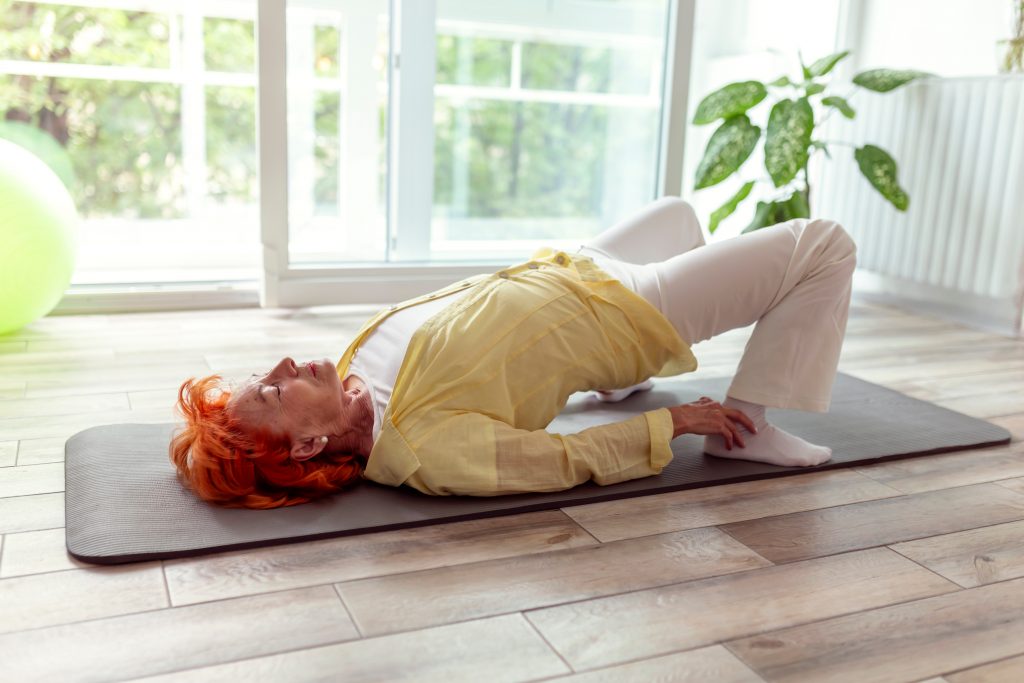
When a woman reaches menopause, her body goes through a lot of changes. Hormone levels fluctuate, which can lead to symptoms like hot flashes, weight gain, and mood swings. These changes can also affect a woman’s energy levels and motivation to exercise.
However, it’s important to stay active during menopause, as exercise can help alleviate some of the symptoms and improve overall health. Additionally, regular physical activity can help reduce the risk of developing chronic diseases like heart disease and osteoporosis. `
If you’re menopausal and looking to start or maintain an exercise routine, read on for tips on how to get the most out of your workouts!
How Can Exercise Help During Menopause?
Exercise can help women not only manage menopausal symptoms, but also reduce the risk of chronic diseases and maintain healthy weight. Regular physical activity has been found to reduce the intensity and frequency of hot flashes, as well as mood swings, fatigue, low libido, and other symptoms associated with menopause. Additionally, getting regular physical activity can help regulate hormones and strengthen bones, reducing the risk of osteoporosis—a condition that can be caused by hormonal changes during menopause. Exercise also increases energy and elevates mood, making it easier to stay active and motivated to stay fit.
What Are The Best Exercises For Menopausal Women?
The type of exercise that is best for menopausal women depends on their health and fitness goals. Aerobic exercise, like walking, jogging, biking, or swimming, can help improve cardiovascular health and reduce the risk of chronic diseases. Resistance training, such as weight lifting, can help maintain and even build muscle mass, which is especially important for women as they age. Additionally, activities like yoga and tai chi can be beneficial in reducing stress and calming the mind.
How Often Should You Exercise?
It is recommended to do some form of physical activity for at least 150 minutes each week. This should be spread out over multiple days and should include both aerobic exercise and resistance training. Additionally, it’s important to vary the type of exercises performed in order to work different parts of the body and prevent boredom.
How Hard Should You Push Yourself?
A general rule of thumb is to start out at a low intensity and gradually increase as your body adjusts. You should push yourself just enough to get your heart rate up, without overexerting yourself. Remember to allow for rest days in between workouts and listen to your body for when it is time to stop.
Why Is It Important To Warm Up and Cool Down?
It is important to warm up before and cool down after each workout in order to prepare the body for physical activity and allow it to recover. Warming up can help reduce the risk of injury and make your workout more effective by boosting your heart rate, increasing flexibility and range of motion, and improving circulation. Cooling down can help reduce soreness, ease muscle tension, and help the body return to its resting state.
What Are The Most Common Mistakes Women Make When Exercising During Menopause?
One of the most common mistakes women make when exercising during menopause is pushing themselves too hard. It is important to avoid exercising at maximum intensity, as it can lead to fatigue, muscle strain, and even injury. Additionally, it is common to lose motivation and dedication over time, so it is important to set realistic goals and plan for periods of rest.
When To See a Doctor About Your Workouts
It is important to see a doctor if you experience any abnormal symptoms while exercising, such as dizziness, chest pain, or shortness of breath. Additionally, if you are new to exercising or just starting to become more active, it is a good idea to get a doctor’s approval before beginning any routines.
If you are experiencing menopause or want to learn helpful information about women’s health, visit our contact page to connect with us.
